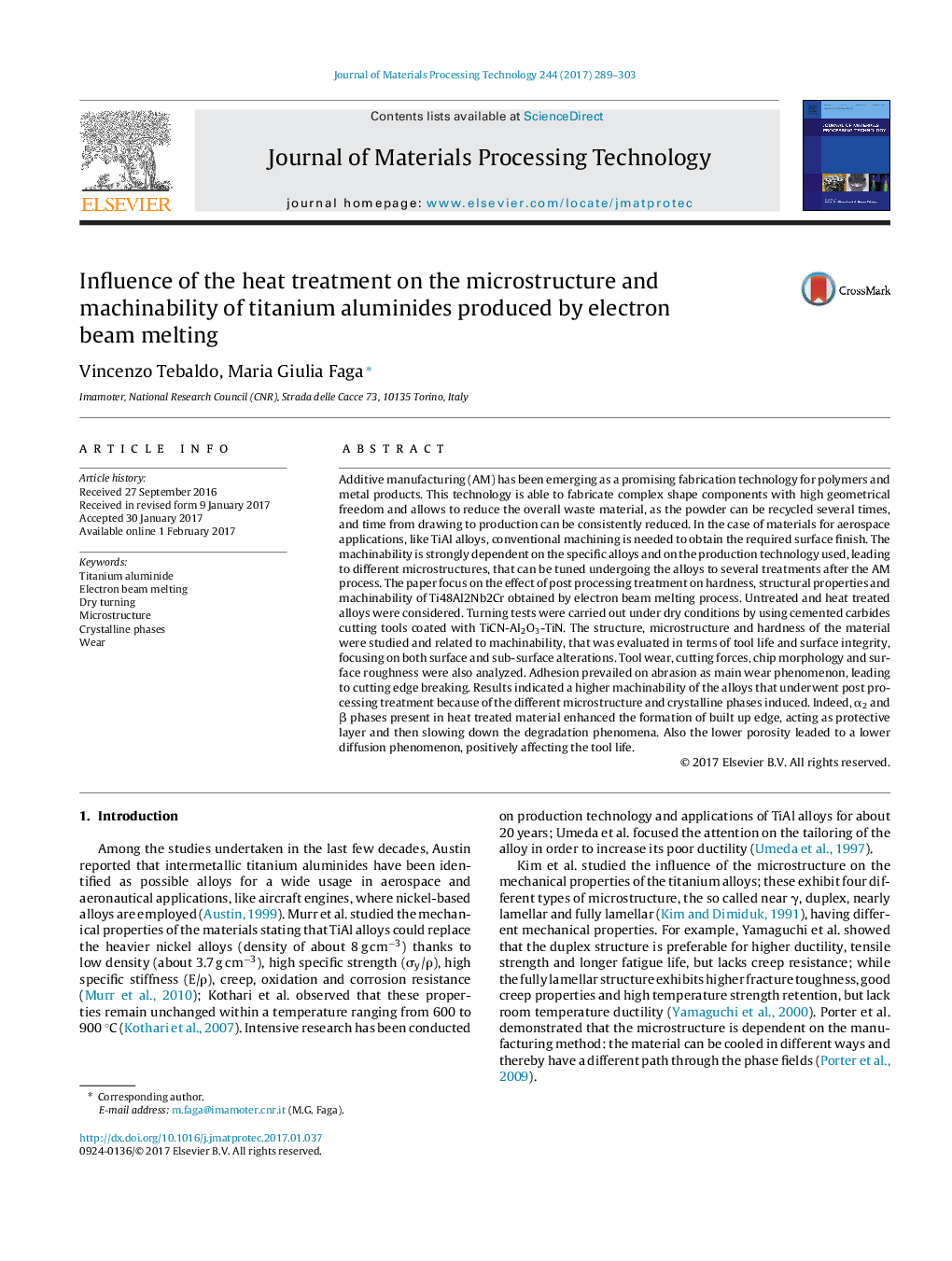| کد مقاله | کد نشریه | سال انتشار | مقاله انگلیسی | نسخه تمام متن |
|---|---|---|---|---|
| 5017899 | 1466723 | 2017 | 15 صفحه PDF | دانلود رایگان |
عنوان انگلیسی مقاله ISI
Influence of the heat treatment on the microstructure and machinability of titanium aluminides produced by electron beam melting
ترجمه فارسی عنوان
تأثیر عملیات حرارتی بر ریزساختار و ماشینکاری قابلیت آلومینیدهای تیتانیوم تولید شده توسط ذوب پرتو الکترون
دانلود مقاله + سفارش ترجمه
دانلود مقاله ISI انگلیسی
رایگان برای ایرانیان
کلمات کلیدی
آلومینیوم تیتانیوم، ذوب پرتو الکترون، چرخش خشک، ریز ساختار، فازهای بلوری، پوشیدن،
موضوعات مرتبط
مهندسی و علوم پایه
سایر رشته های مهندسی
مهندسی صنعتی و تولید
چکیده انگلیسی
Additive manufacturing (AM) has been emerging as a promising fabrication technology for polymers and metal products. This technology is able to fabricate complex shape components with high geometrical freedom and allows to reduce the overall waste material, as the powder can be recycled several times, and time from drawing to production can be consistently reduced. In the case of materials for aerospace applications, like TiAl alloys, conventional machining is needed to obtain the required surface finish. The machinability is strongly dependent on the specific alloys and on the production technology used, leading to different microstructures, that can be tuned undergoing the alloys to several treatments after the AM process. The paper focus on the effect of post processing treatment on hardness, structural properties and machinability of Ti48Al2Nb2Cr obtained by electron beam melting process. Untreated and heat treated alloys were considered. Turning tests were carried out under dry conditions by using cemented carbides cutting tools coated with TiCN-Al2O3-TiN. The structure, microstructure and hardness of the material were studied and related to machinability, that was evaluated in terms of tool life and surface integrity, focusing on both surface and sub-surface alterations. Tool wear, cutting forces, chip morphology and surface roughness were also analyzed. Adhesion prevailed on abrasion as main wear phenomenon, leading to cutting edge breaking. Results indicated a higher machinability of the alloys that underwent post processing treatment because of the different microstructure and crystalline phases induced. Indeed, α2 and β phases present in heat treated material enhanced the formation of built up edge, acting as protective layer and then slowing down the degradation phenomena. Also the lower porosity leaded to a lower diffusion phenomenon, positively affecting the tool life.
ناشر
Database: Elsevier - ScienceDirect (ساینس دایرکت)
Journal: Journal of Materials Processing Technology - Volume 244, June 2017, Pages 289-303
Journal: Journal of Materials Processing Technology - Volume 244, June 2017, Pages 289-303
نویسندگان
Vincenzo Tebaldo, Maria Giulia Faga,
